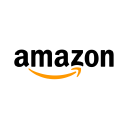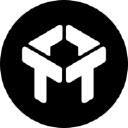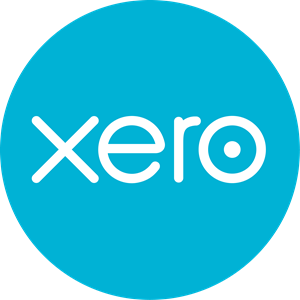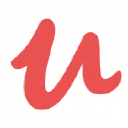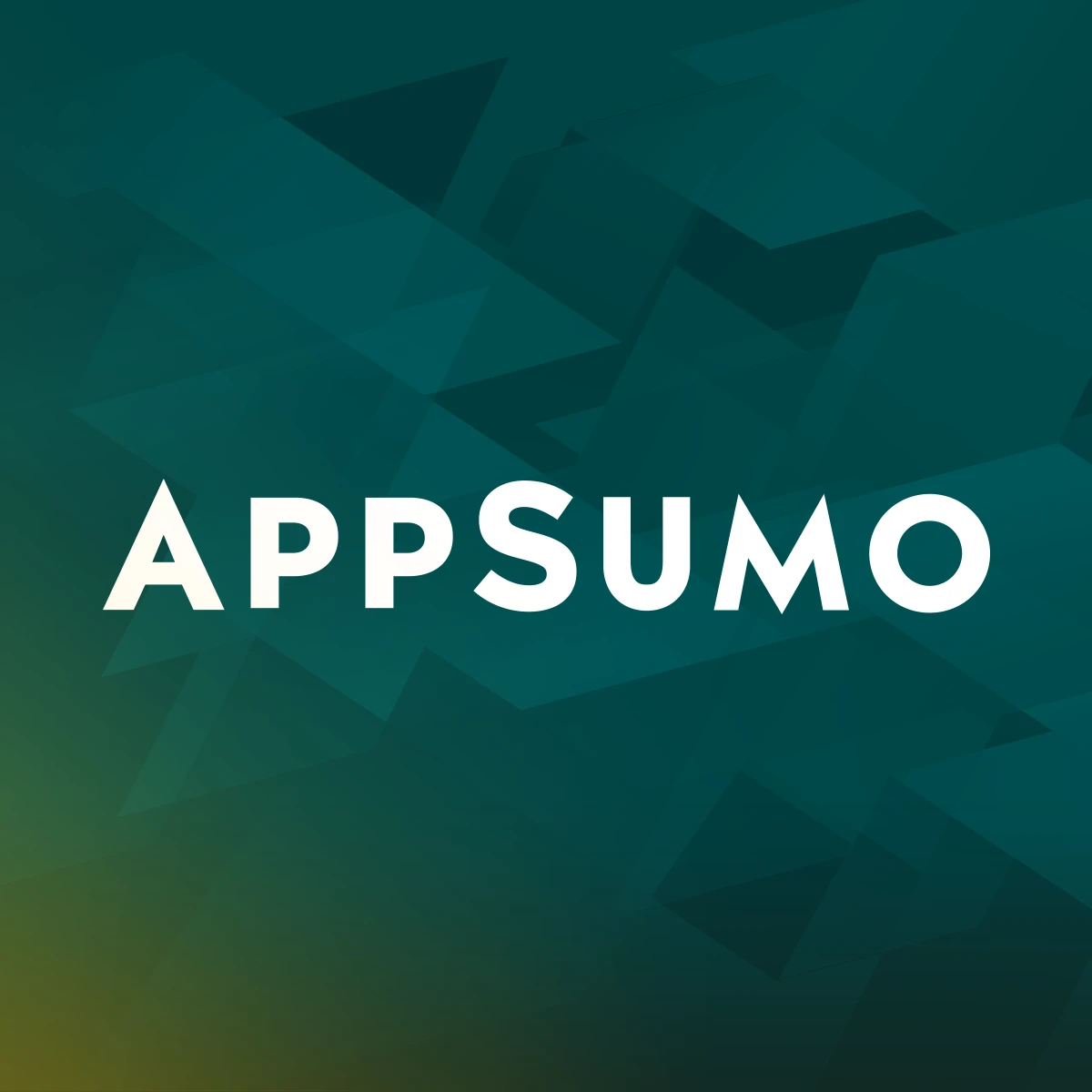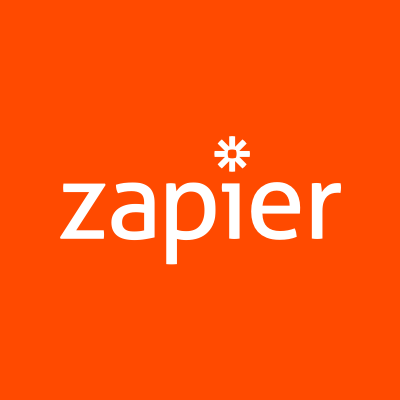From Fitness Junkie To Founder: How I Built A Personal Training Platform
Hello! Who are you and what business did you start?
Hey there! I’m Edward, founder of Health Haven - the one-stop shop for personal trainers, fitness fanatics, and complete newcomers to the health and well-being space to search, find and connect and elevate one another. Personal trainers and fitness professionals make new client connections and more revenue without sacrificing their time and energy, and those looking for a health kick reach their goals faster and more affordable than ever.
Our flagship product is our app that lets you immediately jump into a world of fitness-specific content, resources, professionals, and health-chasers like you. We offer the only app that lets you find a personal trainer from hundreds around the world - evaluating based on their experience, price, reviews, location, and more - and then also start your journey with them from the same place, paying as you go for their services and receiving everything from your workout plans to making your 1-2-1 bookings all from the same place.
Fitness professionals are our primary customers, paying a monthly fee to benefit from this service and the other perks of their subscriptions. We don’t charge those looking for a trainer anything, and we take no commissions on the payments made to their newfound trainers.
Currently, we generate ~ £500 ($600USD) per month from trainer subscriptions with a growing pipeline of platform improvements to roll out to attract more. This growth has been over 2 months.

What's your backstory and how did you come up with the idea?
I’ve always been a huge health and fitness junkie, throwing myself at multiple different individual sports and physical hurdles throughout my early adulthood that seemed to grow and grow in intensity with time.
As I was at university, I realized that even the most elite sports team were using primitive pen-and-paper programming techniques for the athletes. There was little guidance amongst keen fitness fanatics on how to approach exercise correctly, sensibly, and effectively - partly because of a lack of awareness from the student community, and partly because of how out-of-reach quality personal training was financial.
This presented the opportunity for a two-fold solution. A platform that empowered anyone, anywhere, to find the fitness services they need to reach their goals effectively, whilst also digitalizing the programming process easily so busy people can tangibly act on the advice from their trainer and make leaps towards the goals they’re craving.
Being a second-year student at the time, and with many platforms out there dominating the market (think MINDBODY, Trainerize, and MyPTHub), the decision to embark on this project with absolutely no experience in entrepreneurship, software development, or marketing was certainly daunting.
Nonetheless, after managing to outsource app development overseas at a just about affordable rate, I was able to iterate on an Android app with a software developer, get whatever feedback I could from other students and sports coaches, and then iterate. Progress was slow, and I knew we’d never reach that ‘get to market’ moment if we continued at our pace.
Then, that ‘aha’ moment came as I graduated, had slightly more means to invest in the business, and was able to find a technical advisor through the Angellist platform who wireframed, redesigned, and rebuilt the platform from scratch whilst we both simultaneously realized the niche wasn’t just in facilitating sports coaches to manage their athletes.
Enabling the entire global personal training community (70k within the UK alone at the time) to save time and energy on their day-to-day, whilst opening up new revenue streams through our platform that would allow remote training with new clients without necessarily needing to operate out of a gym.
This moment of validation was only heightened when the COVID-19 pandemic arrived, and the fitness community was thrown into the world of remote work. The platform wasn’t quite market-ready at the time, but an initial PoC was certainly there, enough to facilitate the influx of trainer inquiries we had to at least trial the product and offer valuable feedback. In the meantime, I qualified as an EQF Level 5 sports nutritionist and offered dietary advice to those online through social media communities and forums.
Given how confused people were at the time and the struggles people faced with their dietary habits whilst being stuck inside, I felt I could offer no-nonsense advice that led to real successes in their health and well-being. Once I built a rapport with the leads, I invited them onto the platform where I’d deliver their plan. It was through this individual initiative that I was able to make the initial trainer connections between users and trainers, and receive the critical feedback we needed to streamline the product and get significant growth.
Around the same time, at the start of the pandemic, I had also been diagnosed with a rare immune-mediated neurological condition that I was able to leverage to my advantage by doing everything I could to assist the global community of other patients through nutritional assistance and support based off my own experiences.
This again opened up another stream of users onto the platform who helped to validate the good and bad aspects of it and provide inspiration and an unwavering motivation to keep doing what I’m doing with Health Haven.
Take us through the process of designing, prototyping, and manufacturing your first product.
Designing an app may at a glance, seem like perhaps the easiest part of the process. Still, if there’s anything you should take away from this article, it’s that designing is the most cumbersome, error-prone part of launching a digital product (at least for my not-so-creative self, for others, it may come much easier!).
Poor design decisions will cost you unimaginable amounts of financial and emotional pain in due course when you have to make changes that may involve complex re-engineering of your app’s functionality, requiring hours burned by either your existing software developer, yourself, or a new developer altogether - or all of you!
I cannot emphasize enough how important it is to not just dive in and put together designs that seem like they could be ok and don’t leave the design process to the same person/people developing the product. Remember, product design and software engineering are entirely different fields, and even the best engineers may not be suited at all to making the design decisions that are best for your company - especially if outsourced, with little vested interest in the company’s success.
My story went a little like this: Draw up some designs in pencil of how the app could look and flow between screens, based on what I thought I had pieced together so vividly from the existing conversations I’d had with local personal trainers and then let the outsourced developer make sense of them and put them into practice.
This couldn’t have been more incorrect - a better approach would be to focus entirely on your target user, and have them dictate exactly how it would look (maybe form a type of committee of early adopters who would be happy to do so). Have these designs drawn up properly using a wireframing tool like Figma, then work closely with the development team to see it through to completion and change anything you need along the way.
Unfortunately, it took me several years to realize this approach - being a complete outsider to the app developer scene - and I have to thank the advice I received from valued members of the SaaS startup community I met on platforms like AngelList for the advice there.
The cost of making the mistakes above have been consistent - frequency rewrites of the code base and temporary software development hires have certainly presented a lesson to learn. Looking back, it was this initial development phase and first launch that taught me countless lessons I am so grateful to have learned today.
Aside from the development pains, just in time for the app’s launch on the google play store, we tried to sponsor an event in London with a well-known spokesperson in the functional movement space - Darryl Edwards (pictured below) - which was arranged just a week in advance during the holiday season in August.
We had no paid marketing for the event, just a listing on Eventbrite, so it ended up being a chat between us (the Health Haven team) and Darryl. An expensive chat nonetheless, it was certainly insightful, and he shared a plethora of valuable information about his experience working on the HealthTech boundary.
Another launch-time ‘mistake’ worth noting was my lack of due diligence into other businesses that may already have trademark rights to our then GymBuddy company name. It didn’t take long for the GymBuddy originators elsewhere in the UK to find out about us and send us a letter requesting the name change - which I thank in part for forming the Health Haven brand today!
Don’t try and do everything. Experiment with routes to revenue, find what works, and cut everything else.


More…

Describe the process of launching the business.
I’d love to say that there was that magical launch moment with Health Haven, but sadly it was more of a drawn-out slog as I’m sure is the case for many other founders out there. It all felt a little anticlimactic as we first only had an Android product, limiting our potential customer base.
We had no distinct marketing strategy and were leaning on our initial relationships with the UK trainer community until then. I had a huge amount of work that needed to be done to take the platform to where I wanted it to be, but little time.
For this reason, I consider the original launch as the point I found my business partner, and we launched cross-platform for both iOS and Android. The difference with having someone else onboard who knew the tech stack and infrastructure inside-out was enormous and allowed me to focus on the initial feedback from users.
This ultimately took us from a v1/Beta product to what we have today. With the help of my Co-Founder, we outreached tirelessly to well-respected players in the fitness industry seeking any feedback we could get, we visited gyms, we sponsored Bootcamps in London and Birmingham and we sourced a reliable team of hardworking software developers to quickly iterate the platform. Essentially, we growth-hacked our way to building an app, website, and digital promotion service for newly qualified level 3 trainers.



At this point, we were entirely self-funded, with the addition of a grant from the University of Birmingham, which helped us to get our feet off the ground. As a student, resources were limited, and I had to leverage whatever I could to keep development progress rapid.
My biggest lesson: Don’t try and do everything. Experiment with routes to revenue, find what works, and cut everything else. We were doing far too much and were stretched too thin for just a handful of Founders/volunteers, including brain-training for athletes using neural networks to help them up their game and to bring them and their network onto the platform… (see sponsored golf balls below!)

Since launch, what has worked to attract and retain customers?
Today, whilst not yet profitable, we have our highest consistent MRR, which has all been achieved in Q4 22 since we started the marketing strategies
So far, I’ve found that by offering as sincere and personal a service as we can for fitness professionals out there seeking a monetizable digital training career, we have been attracting a lot of leads from some of our largest competitors including Bark and Trainerize.
Our USP is combining both of those platforms into a single one-stop-shop for affordable lead generation and client management, which we had major validation for through pitches to the likes of GymShark thanks to the University of Birmingham’s B-Enterprising society, and through initial monetization from top personal trainers in London in 2021.
The problem? It wasn’t scalable. We were offering tailored lead generation solutions to trainers with variable pricing depending on how much they were charging, and it was a frantic race to deliver a certain number of reliable leads every month. It felt much more like a consultancy, and I couldn’t separate myself from the brand.
The solution to this was a solid 6 months of strategizing and rethinking everything from budget allocation to marketing strategies (until this point, we hadn’t spent a penny on Ads, just email marketing through Mailchimp targeting people paying for google ads, as we offered a more cost-effective solution).
In the end, we decided to allocate as much to sales and marketing as possible and, cut costs on new app feature development/scrap any subscriptions to tools we weren’t fully using. This was hard, especially after some home-grown tech tools, including web scrapers and bots, had to be canned, but ultimately this was all for the better. We divided up the efforts into digital marketing, email marketing, social media presence, outreach, SEO, and alternative marketing routes.
Our immediate goal was to find marketing routes that generated paying clients (trainers) whilst also pulling in good leads seeking trainers so there was a balanced community and trainers were able to outreach themselves to the new leads as well as manage them through our app. Our longer-term goal was to have an organic growth of traffic to our website via brand awareness and SEO. So, we got to it!
Regarding trainer-side marketing, we still haven’t had to use ads as after trying to list postings on Gumtree, send out DMs directly on social media, and investigate other alternative marketing routes - we found the winner: targeting trainers who we know use other listing platforms such as Bark, and sending them a well-refined email intro template highlighting exactly how we can help them save time, money and energy on the day to day. This has had a response rate of around 20%, with a conversion rate of around 2-5%, and costs us nothing but time to do.
Regarding the users/leads, we run ads on Google targeting specific keywords that we research for cost-effectiveness by using tools such as DinoRank. Trialing keyword research tools has been easy and close to free thanks to the secret entrepreneur platform - they have a tonne of trials and discounts with valuable platforms for any online business.
We also use social media outreach, both actively and passively, via posts and content on our Instagram/Facebook, as well as by my efforts in building the brand by offering heavily subsidized nutritional guidance to people in Facebook groups who are struggling with everything from weight loss to symptom management when dealing with certain autoimmune conditions.
I offer them plans through the app and just ask for a review in return on Google / the App Store. This tends to speak for itself, as many such communities are extremely close-knit and word of mouth goes a long way. I do this outreach via my Facebook account and post content to a personal TikTok (@headless_sufferer) and Twitter (@daybydayonebyone). By posting sincere and comedic content, engagement has been high, as people can get a lot of value out of the channel for free.

We also outreach to micro-influencers through social media, and in return for posting content on behalf of Health Haven, we offer them branded merchandise, like a hoodie or tank top. We’ve distributed a lot of clothes to date, and find weeks or months down the line, it pays off as people come into our funnels having seen our name from someone they follow.

At last… a decent click rate!
Our customers tend to return because I’m now able to divert a vast amount more time into client relations and ensuring people, trainers, and leads, feel they are working with a reputable brand they can trust, put a face to the name and get a disproportionate amount of value for what they pay vs. other competitors who tend to opt for the only digital approach.

How are you doing today and what does the future look like?
Today, whilst not yet profitable, we have our highest consistent MRR, which has all been achieved in Q4 22 since we started the marketing strategies mentioned above.
- Gross Margin: 0.29
- Cost of goods: £230
- CAC: £128
- Ad costs: £300/month (Google ads)
- Customer lifetime value: TBA, not enough subscription cancellations
- Monthly traffic: >1k website visits (only from google ad clicks, excl organic traffic)
- Average time on site: NA
- Conversion rate: Trainers, alternative marketing ~5-10%, clients, < 1% (digital marketing, social media, word of mouth).
Today we are focused heavily on the UK, targeting different cities stagewise to attract new trainers via the same methods. We are constantly reviewing and reconfiguring our ad campaigns on the lead/client side to make sure we have sufficient leads signing up in the same area as the trainers as insurance in case the leads are not willing to train remotely, increasing the chances of conversion for the trainers reaching out to the leads.
Much of the day-to-day operations are now heavily focused on trying out different marketing and sales strategies to help us achieve our immediate goal of £10k MRR and catering to our existing paying trainers to ensure maximum value from their membership.
This has been possible thanks to the tiresome work of the team, in particular our overseas contractors, who we’ve worked with for several years and who have consistently provided time and time again. We’ve let them take on more responsibility as a result, and they can now reliably help us with maintaining a social media presence and assist with some lead outreach, all in addition to facilitating our application development.
Our longer-term goal is to grow globally and become the established brand internationally for finding the health and well-being services you need on the fly. We’d love to have people traveling for work/vacation to be able to jump into our app and work with a PT for a week.
We’re also eyeing how to build and grow niche communities of users within the app who can collaborate and seek out the advice and support they need to manage, for example, the symptoms of their chronic conditions.
Through starting the business, have you learned anything particularly helpful or advantageous?
100%. I’ve learned many lessons the hard way - being the first business I’ve started and with limited access to funds, I walked into this venture blindly and with a ‘nothing to lose’ mentality.
The reality is now it has grown to be so much more that if I’d known back then, I would have certainly tread with more caution before making detain decisions. Handing out equity as I had no money to pay them was not always the smart long-term decision and can pose difficulties when trying to raise money later.
Agreeing to work with anyone who offered to help because I always felt I was the one asking for a favor, also led me to waste significant time working with untrustworthy characters and poor communicators. Being too nice was something I had to force myself to stop doing and keep disciplined in staying focussed on the business objectives as a whole.
Some of the better decisions I’ve made included using AngelList to find an unbelievably reliable business partner and Co-Founder. I think I certainly struck lucky here, as the two of us bring a unique and diverse set of skills to the table that complements each other brilliantly - I have more of a handle on contextual knowledge, product vision, and client relations, whilst he has a technical background and can fully manage the product and operations, as well as make smart decisions to help with early-stage growth thanks to his existing startup experience.
Another good decision was not jumping into digital ads marketing in a frantic effort to lure clients. By experimenting with alternative routes, we tapped ‘free’ lead generation potential and have already monetized in a much leaner way than we otherwise would have.
Fortunately, the seasonal aspect of peoples’ attitudes towards taking ownership of their health has meant over the winter periods and in the build-up to the new year has tended to attract a much larger lead/user flow than during other times of the year, in particular, this year, which helps us in turn, onboard new trainers.
Nonetheless, the HealthTech space is changing so rapidly, and I see the personal training space moving almost entirely digital soon. With the arrival of ChatGPT, we have many new ideas on the horizon, including fully AI-based PTs to help us keep on top of the ever-changing tech trend. We will likely need to integrate wearable tech and devices into the app’s range of features at some point too.
To my previous point, I’ve learned to refine and focus much more on the things that work and cut out a lot of the noise that occupied significant time in the earlier stages before we monetized and could afford to experiment a little more. Trying to do everything will kill the business and attract no early adopters. You have to find a customer/service/feature niche and develop it relentlessly according to what your early adopters want to be, then able to build and grow out other features and routes to revenue.
Some useful habits/skills I have notably include ruthless determination and never-ending curiosity. The two of these have helped me to learn endless amounts about the personal training sector, problems faced, practices and protocols, and opportunities, as well as a lot of the low-level stuff (I became level 5 Sports Nutrition qualified over the pandemic, PT level 3 in training) whilst concurrently hammering home the product and relentlessly pushing to get it in the hands of our target users. By building credibility, I’ve been able to train/work with many clients myself on the Health Haven platform, which has highlighted what works and needs improvement.
What platform/tools do you use for your business?
These are endless… we rely on tech tools and automation to make things work efficiently. Notable tools include:
- CRM - Mailchimp premium, with journeys and automation, + integration with our app via the API to automate user notifications on signup
- Documentation and onboarding - Notion
- Script scheduling and repeated job automation - Pythonanywhere
- Cross-service interactions - Zapier
- App backend services - Google Firebase
My favorite of them all would probably have to be zapier. It lets you integrate anything that exposes an API key, says firebase and Mailchimp, to let you port all new users over to an audience, Typeform and Mailchimp (for similar reasons, but for new form sign-ups), or equally firebase and anything else to create actions on particular event triggers in your database. It saves a huge amount of dev work at affordable rates.
What have been the most influential books, podcasts, or other resources?
Health and wellness specific - my top pick would be anything and everything from Dave Asprey - the bio-hacking king. His book Superhuman and his podcast, the Human Upgrade, both educate you in weird and wonderful ways into how you can optimize how you look, feel, and perform on the day-to-day. The 10x Rule by Grant Cardone helped unleash my inner salesman and made me realize just how much more I had available to give.
The Entrepreneur Voices books on Leadership and emotional intelligence have helped with doing my best to influence, motivate and build a team and the endless newsletters I’m subscribed to (Entrepreneur daily, Jamie Goral’s London Business Coach weekly newsletter) have all provided invaluable reading and learning opportunities along the way.
Advice for other entrepreneurs who want to get started or are just starting out?
Sadly nothing you probably haven’t heard here, but truly, don’t be afraid to roll with your gut instinct and never give up.
Countless, countless critics have thrown negative comments and doubts on Health Haven since it first started, competitors threatened us with cease, and supposed mentors have shunned it.
Be open to feedback and always try to aggregate it across multiple groups of people and then decide with your team if you think it’s worth acting. You will have to drop all pride! It’s going to be painful, and statistically, your first business probably won’t work out, but that’s ok and hopefully not the point of your pursuit of the goal you’re working towards - which leads me to my next point.
Although ultimately, success is what you’re chasing, it can’t be the raison d’être for you to be doing what you’re doing. The journey is 99.99999% of what you will experience, meaning the wins, losses, hardships, and stresses. You will have days where you seriously consider packing it in - it’s then that you need to fall back to realizing the other immensely valuable aspects of continuing in your pursuit bring you.
Knowledge, business acumen, analytical skills, critical thinking, relationships, networking, presentation skills, multitasking capabilities, and the ability to operate under extreme stress are immensely valuable life skills you should attribute just as much importance to.
Where can we go to learn more?
If you have any questions or comments, drop a comment below!

Download the report and join our email newsletter packed with business ideas and money-making opportunities, backed by real-life case studies.

Download the report and join our email newsletter packed with business ideas and money-making opportunities, backed by real-life case studies.

Download the report and join our email newsletter packed with business ideas and money-making opportunities, backed by real-life case studies.

Download the report and join our email newsletter packed with business ideas and money-making opportunities, backed by real-life case studies.

Download the report and join our email newsletter packed with business ideas and money-making opportunities, backed by real-life case studies.

Download the report and join our email newsletter packed with business ideas and money-making opportunities, backed by real-life case studies.

Download the report and join our email newsletter packed with business ideas and money-making opportunities, backed by real-life case studies.

Download the report and join our email newsletter packed with business ideas and money-making opportunities, backed by real-life case studies.
